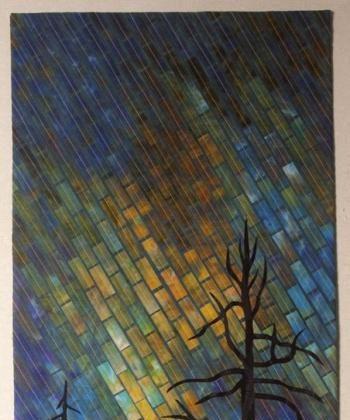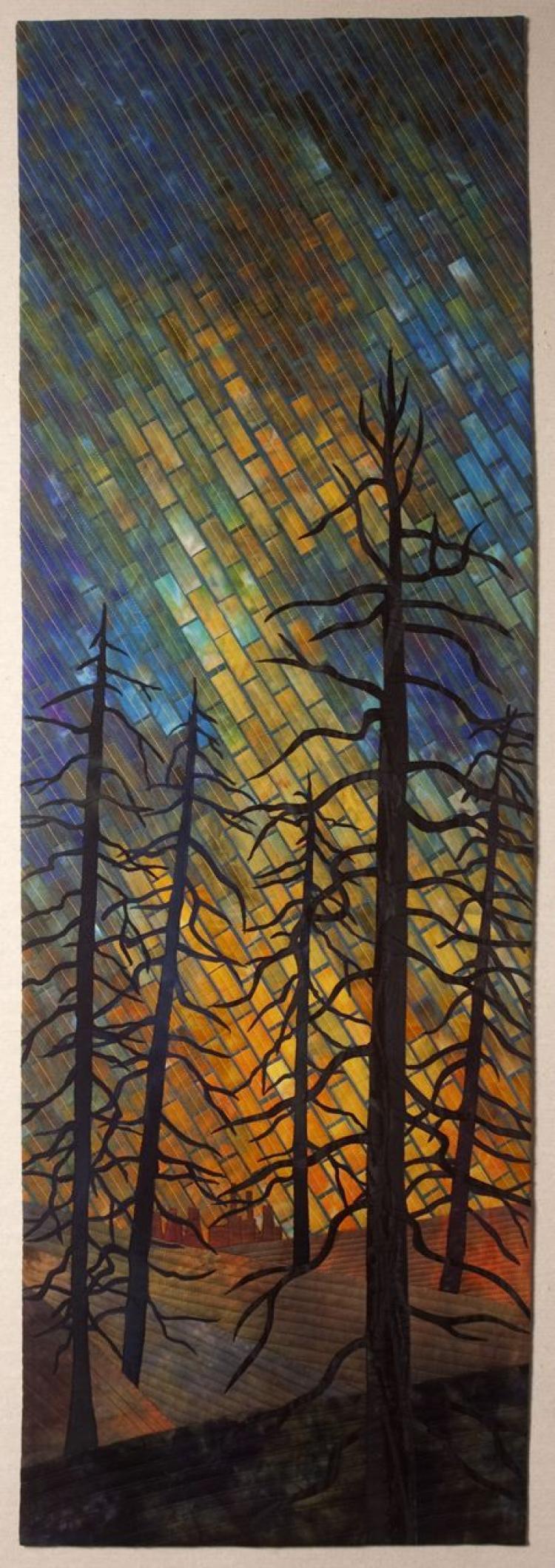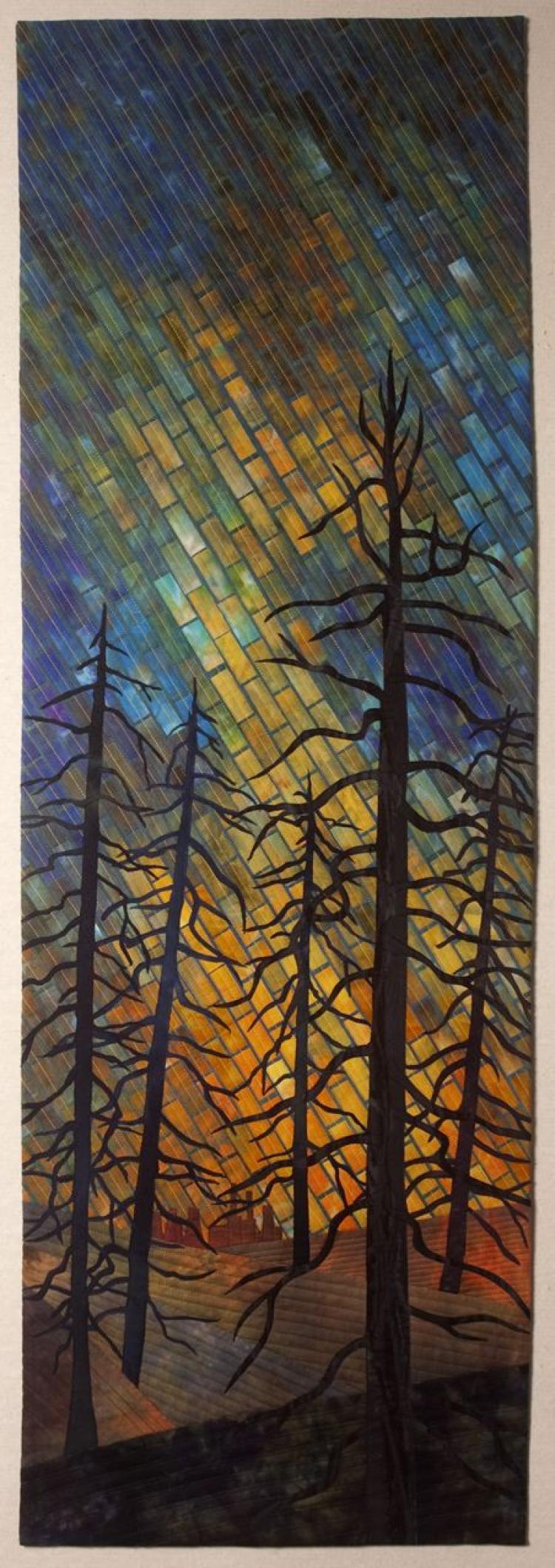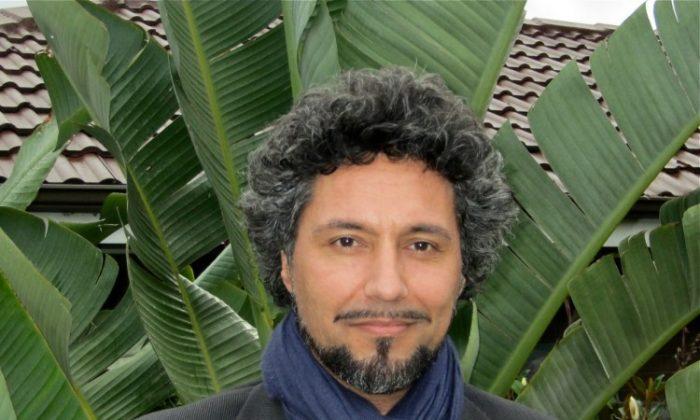MELBOURNE—The history of human civilisation is written with our arts and crafts, and as far back as cloth existed, it seems that quilting did too.
In modern times, quilting has evolved into a craft that is no longer simply utilitarian. Quilters are nowadays creating works to be hung on the wall and enjoyed purely for their aesthetic qualities.
Some are even pushing the boundaries between craft and art.
The Australasian Quilt Convention (AQC) is about to hit Melbourne between April 29 and May 2 at the Royal Exhibition Building and stands as testimony to the growing popularity of quilting.
Organiser Judy Newman told The Epoch Times that the AQC is “particularly special because every quilt in the show has been hand picked. Theses quilts are the cream of the crop.”
There will be more than 400 quilts on display from Australia, Japan and the UK, as well as throughout Europe and South Africa.
She adds: “Australian quilters are very keen to experiment with their own original designs, although they might start out with traditional patterns.”
Whoever you are, of whatever gender or age group, looking at a quilt is bound to leave you in awe. One thing that seems to jump out is the sheer love of the person who made it. And it is more evident than in other crafts because of the laborious and intricate nature of quilt designs. The passion is there for sure, but it is always tinged with a considerable dollop of sheer madness.
Gloria Loughman calls herself a contemporary quilt maker. Her work has achieved much acclaim. But does she see herself as a crafts person or an artist?
“Most of what I make I’m making to hang on the wall. Instead of using paint, I’m using fabric to create a piece of artwork. The stitching and the cutting out, the construction process is really a means to an end. It’s just part of the technique you use to create an artwork,” she said.
Gloria has published two books on quilting and is in demand teaching both in Australia as well as overseas due to her original style inspired by the Australian landscape. She took up quilting as therapy after undergoing chemotherapy. Surprisingly, she confides: “I didn’t know that I could even do this. I hadn’t done art since year 10 at school and I wasn’t very good at art, and it wasn’t until I started doing this that I could put colours together and away I went.”
But why take up quilting rather than painting—something that has far more immediate results and is potentially equally therapeutic?
Gloria explains: “I like the surprises you get when you put the different fabrics together. I love working with fabric as a medium and also the cutting up and putting it back together. I know it sounds ridiculous, but you can create so many wonderful effects. Then there’s also the tactile side of it. With quilts, you run your hand over them and the feel of something soft is wonderful.”
But she is adamant that what she creates goes beyond craft and is art for its own sake.
“When I first started making the landscape quilts, I was fairly realistic, although I pushed the boundaries with the colours. Then, after some time, I went through a period of three years of making quite abstract quilts. Now, I’m back to landscape, but in a more abstract way. I can play with patterns within the landscape. Colour is still everything to me, but I still value good workmanship even though the colour and the design and the actual image is probably the most important. I think that good workmanship has to go hand in hand with that.”
Gloria Loughman’s work, along with other quilters whose work is unique, will be on display at the Australasian Quilt Convention.
For those afflicted with the quilting bug, missing the exhibition will be too unbearable to contemplate. For the rest of us, we might just want to take a peak into a parallel multicoloured universe that might also provide some answers to questions such as: How is it that fabric shops have so many quilting fabrics? Who buys them? What do they do with them? For more information, visit www.aqc.com.au






Friends Read Free